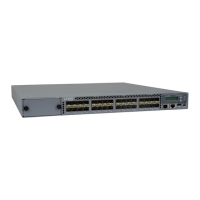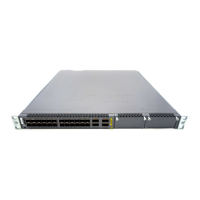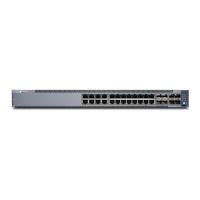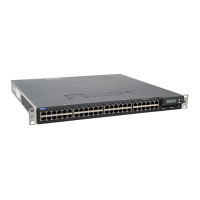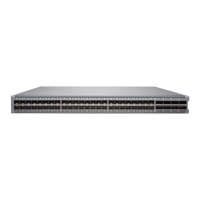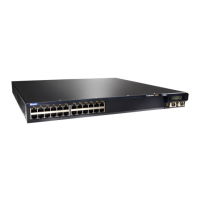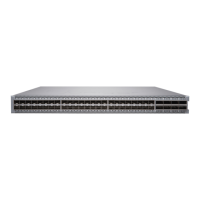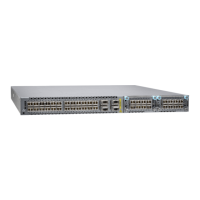For single-mode transmission, modal dispersion is not a factor. However, at higher bit rates and over
longer distances, chromac dispersion limits the maximum link length.
An ecient opcal data link must have enough light to exceed the minimum power that the receiver
requires to operate within its specicaons. In addion, the total dispersion must be within the limits
specied for the type of link in Telcordia Technologies document GR-253-CORE (Secon 4.3) and
Internaonal Telecommunicaons Union (ITU) document G.957.
When chromac dispersion is at the maximum allowed, you can consider its eect as a power penalty in
the power budget. The opcal power budget must allow for the sum of component aenuaon, power
penales (including those from dispersion), and a safety margin for unexpected power loss.
Calculate the Fiber-Opc Cable Power Budget for EX Series Devices
To ensure that ber-opc connecons have sucient power for correct operaon, calculate the link's
power budget when planning ber-opc cable layout and distances. This planning helps you ensure that
ber-opc connecons have sucient power for correct operaon. The power budget is the maximum
amount of power the link can transmit. When you calculate the power budget, you use a worst-case
analysis to provide a margin of error. You use a worst-case analysis even though not all the parts of an
actual system operate at the worst-case levels.
To calculate the worst-case esmate for a ber-opc cable power budget (
P
B
) for the link:
1. Determine values for the link's minimum transmier power (
P
T
) and minimum receiver sensivity
(
P
R
). In the following example, we measure both (
P
T
) and (
P
R
) in decibels relave to one milliwa
(dBm).
P
T
= – 15 dBm
P
R
= – 28 dBm
NOTE: See the specicaons for your transmier and receiver to nd the minimum
transmier power and minimum receiver sensivity.
2. Calculate the power budget (
P
B
) by subtracng (
P
R
) from (
P
T
):
– 15 dBm – (–28 dBm) = 13 dBm
148

